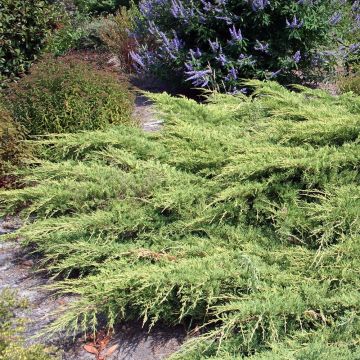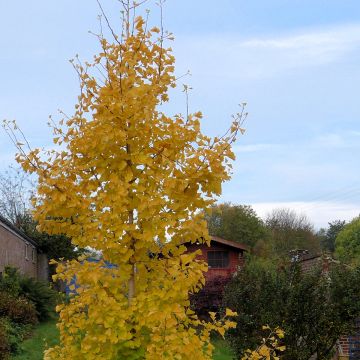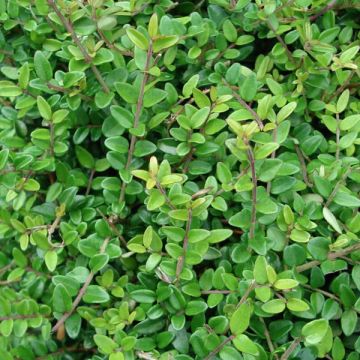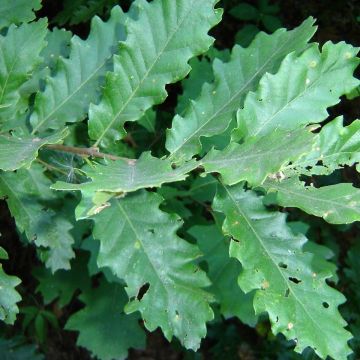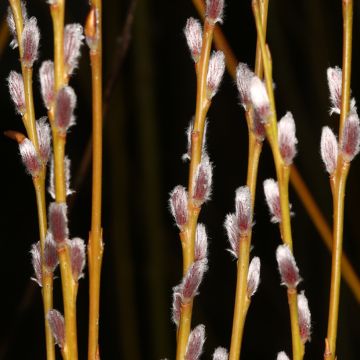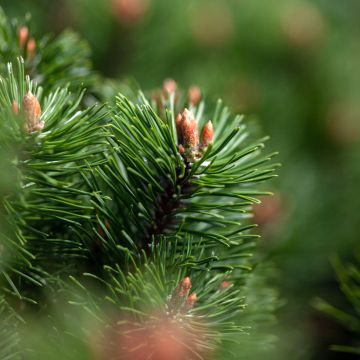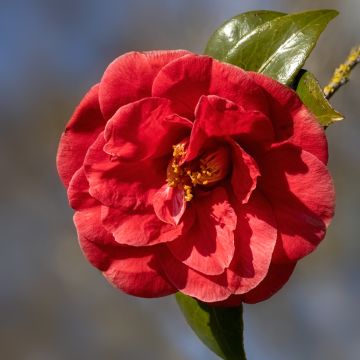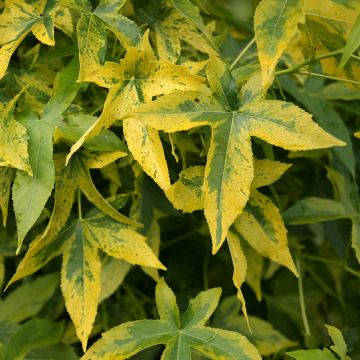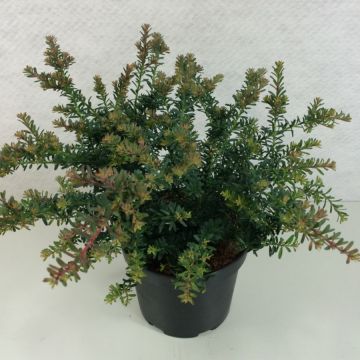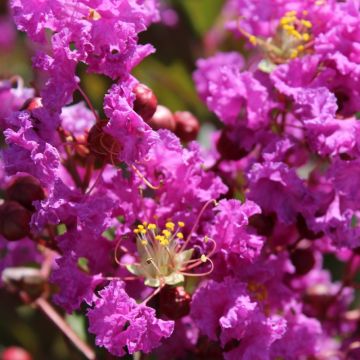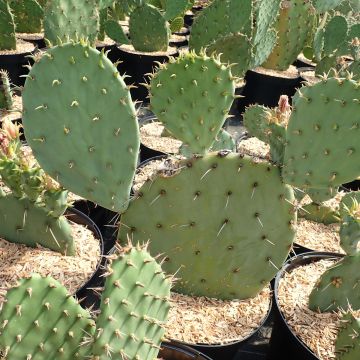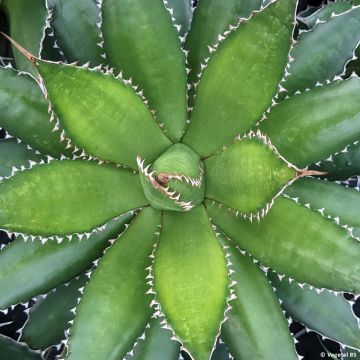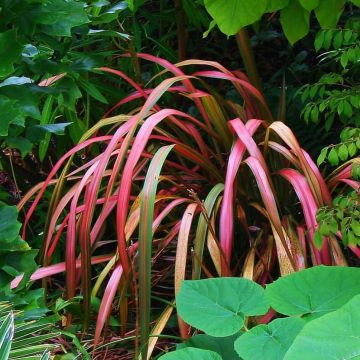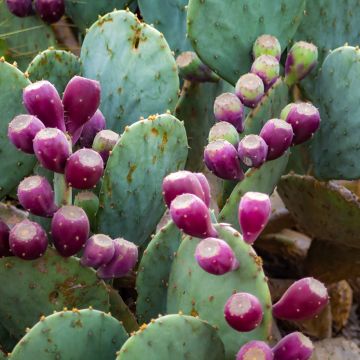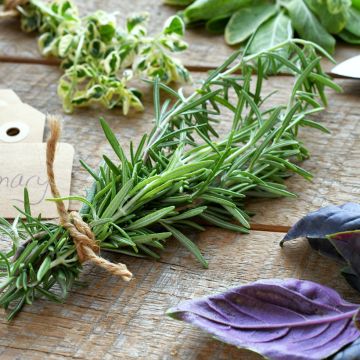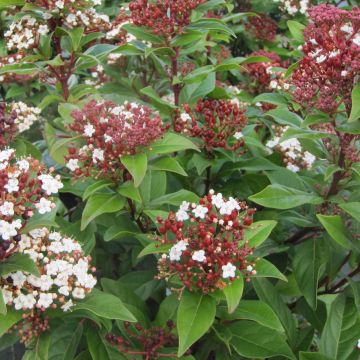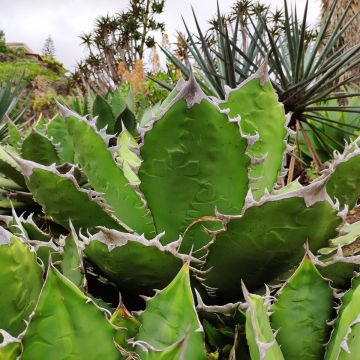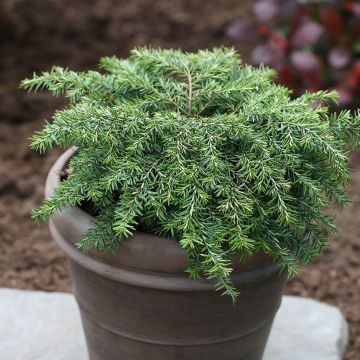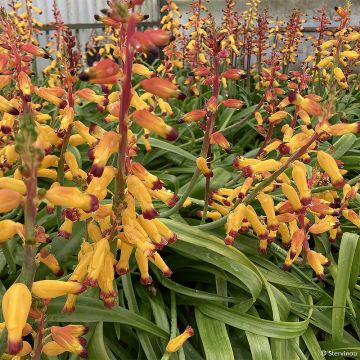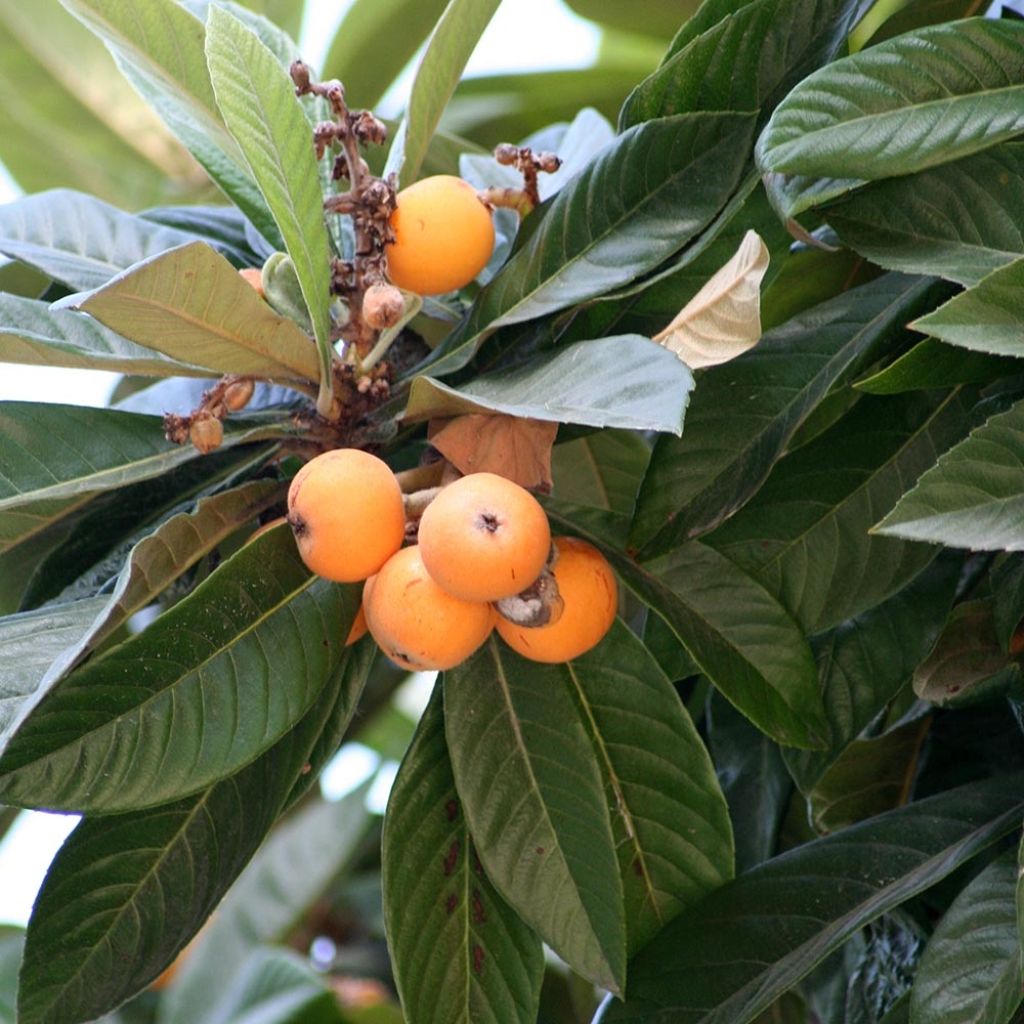

Eriobotrya japonica
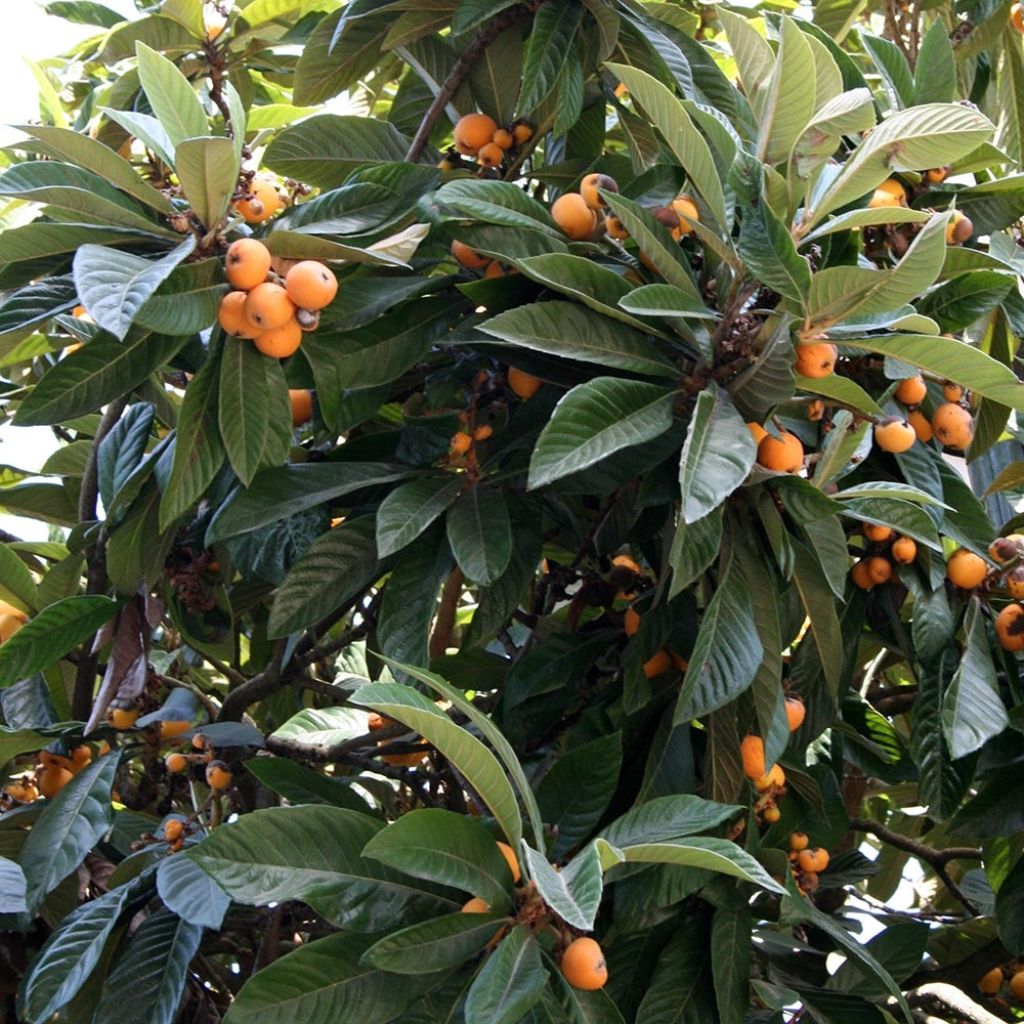

Eriobotrya japonica
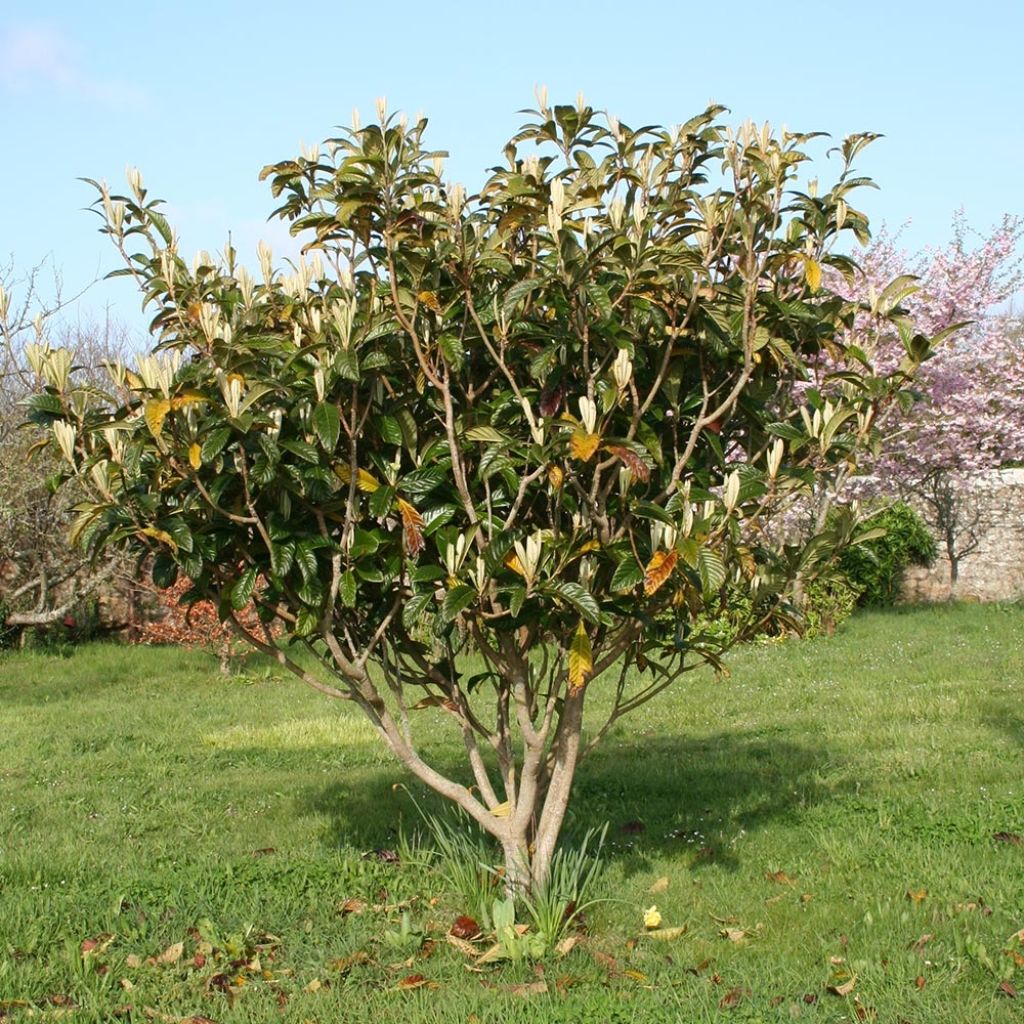

Eriobotrya japonica
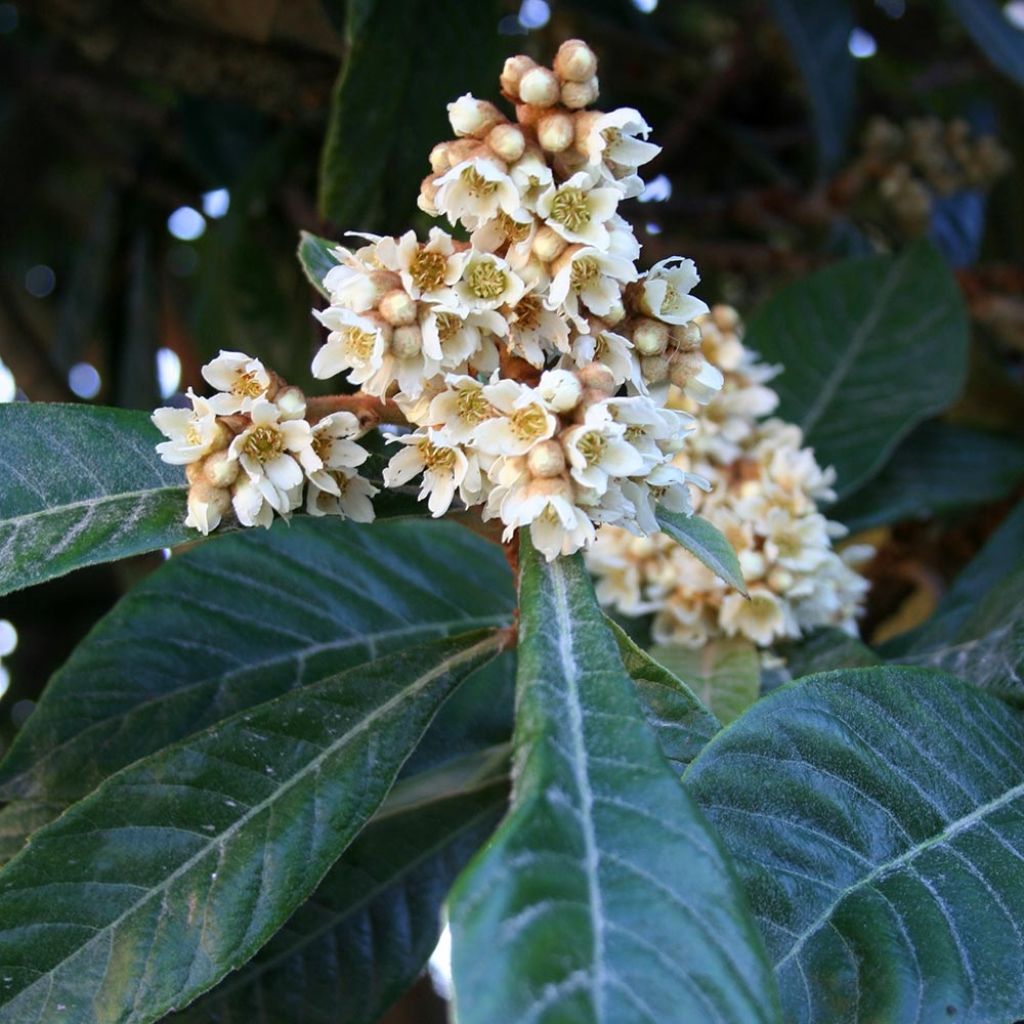

Eriobotrya japonica
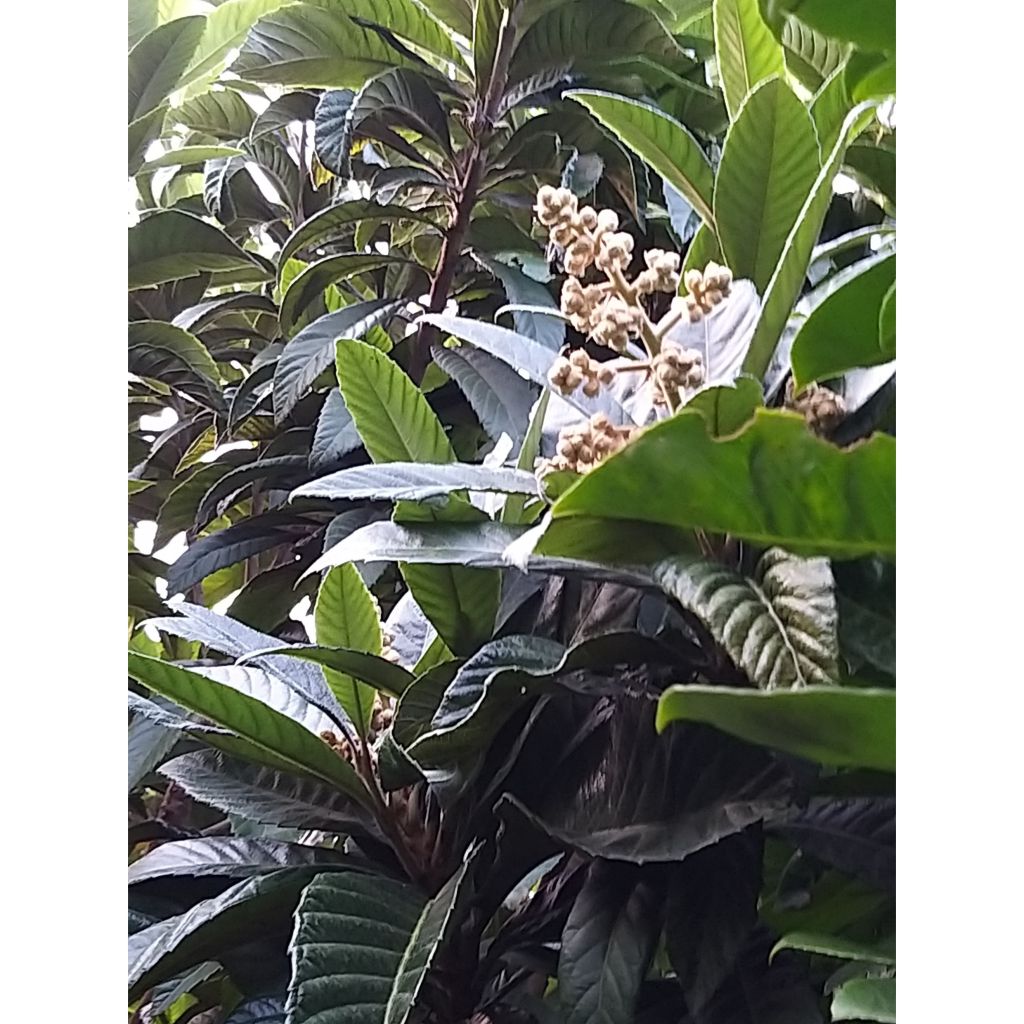

Eriobotrya japonica
Eriobotrya japonica
Eriobotrya x japonica
Japanese Loquat
This item cannot be shipped to the selected country
Delivery charge from €5.90
Oversize package delivery charge from €6.90
More information
Schedule delivery date,
and select date in basket
This plant carries a 24 months recovery warranty
More information
We guarantee the quality of our plants for a full growing cycle, and will replace at our expense any plant that fails to recover under normal climatic and planting conditions.
From €5.90 for pickup delivery and €6.90 for home delivery
Express home delivery from €8.90.
Oversize package: home delivery by special carrier from €6.90 per order..
Express home delivery from €8.90.
Does this plant fit my garden?
Set up your Plantfit profile →
Description
Eriobotrya japonica, better known as the Japanese loquat, is a large evergreen bush native to warm temperate regions of Asia, which should not be confused with our common medlar Mespilus germanica, whose fruits are consumed when over-ripe. It has retained from its more exotic origins a 'tropical' charm that is expressed in its large and beautiful shiny leaves, its autumn flowering with the scent of almond and its delicious fruiting, which only survives mild winters. Despite its preference for southern or oceanic regions, the Japanese medlar can withstand mild winters, and it will happily adapt to container cultivation in colder regions. This very beautiful bush has a unique personality, to be highlighted in the garden or on the terrace.
The Eriobotrya japonica belongs to the rose family, it is a distant relative of cherry trees or roses. Native to the hot mountainous regions of southwest China, the Japanese loquat quickly spread to Japan. It is a small tree that appreciates deep, rich soils, and tolerates the presence of limestone in the soil very well. Once well rooted, it can withstand long dry periods and frosts of around -12°C (10.4 °F). Its flowers and young fruits are destroyed at temperatures lower than -5°C (23 °F).
The loquat has an upright and spreading habit. It forms one or several trunks covered with a brown-grey bark that support a wide, branching, slightly flared crown. Its growth is quite rapid, and at maturity, it will reach an average height of 6m (19 ft 8 in) and a width of 4 to 5m (13 ft 1 in to 16 ft 5 in) under good conditions. Its foliage persists in winter. It consists of large lanceolate leaves, with very visible veins and dentate edges, measuring 15 to 25cm (5.9 to 9.8 in) in length and 5 to 8cm (2 to 3.1 in) in width, with a leathery texture. The upper side is a bright green colour, while the underside is velvety and rust-coloured. The young leaves are covered with a green-grey, almond-coloured fuzz. Flowering takes place in October-November, depending on the climate. For at least 4 weeks, dense and conical clusters of flowers called thyrses, measuring 10 to 15cm (3.9 to 5.9 in) and slightly trailing, open at the terminal ends of the branches. These clusters have a large number of small cream-white flowers, 2cm (0.8 in) in diameter, with 5 petals. In mild and calm weather, this flowering spreads a sweet scent that combines notes of bitter almond and vanilla over several metres. Pollination is ensured by bees, which find a good source of nectar in the flowers. The edible fruit, called a loquat is ovoid in shape and yellow-orange when ripe (in May-June depending on the region). It measures 3cm (1.2 in) in diameter and has a juicy and slightly acidic flesh, very refreshing. Each fruit contains two to three large shiny brown inedible stones. Japanese loquats are consumed fresh, raw, or cooked in compote.
Eriobotrya japonica is a very decorative small tree, to be highlighted in the garden for the beauty of its habit and foliage. It can also be grown in a large container, which will limit its growth and allow gardeners to protect it from severe cold in an unheated and bright location. With a strong personality, this large bush is quite difficult to associate with. For example, you can plant small periwinkles or macrorrhizum perennial geraniums at its base.
Report an error about the product description
Eriobotrya japonica in pictures
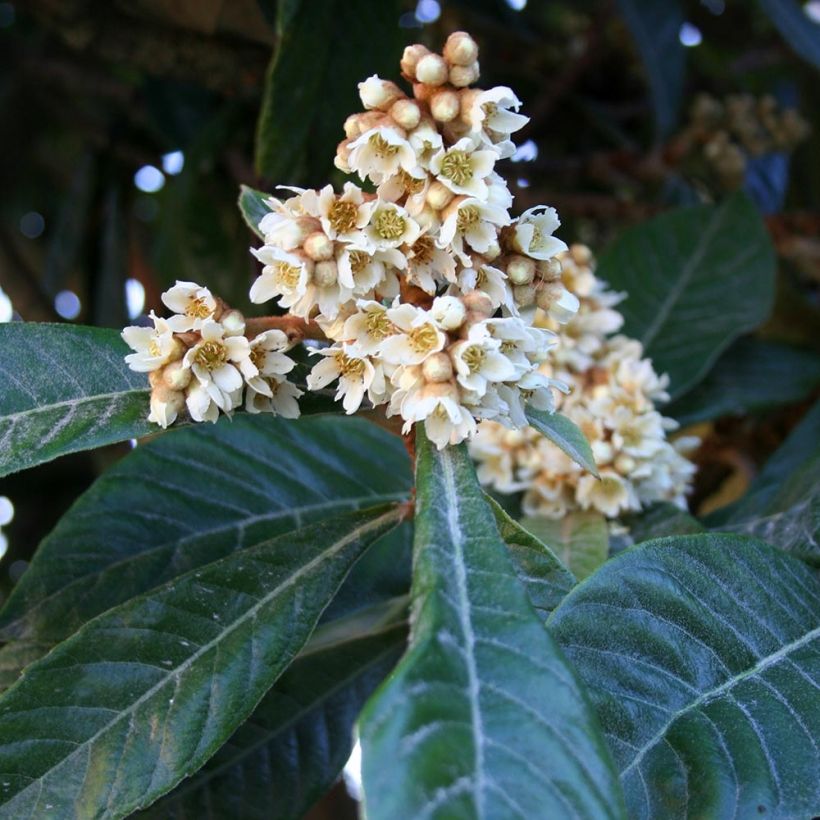

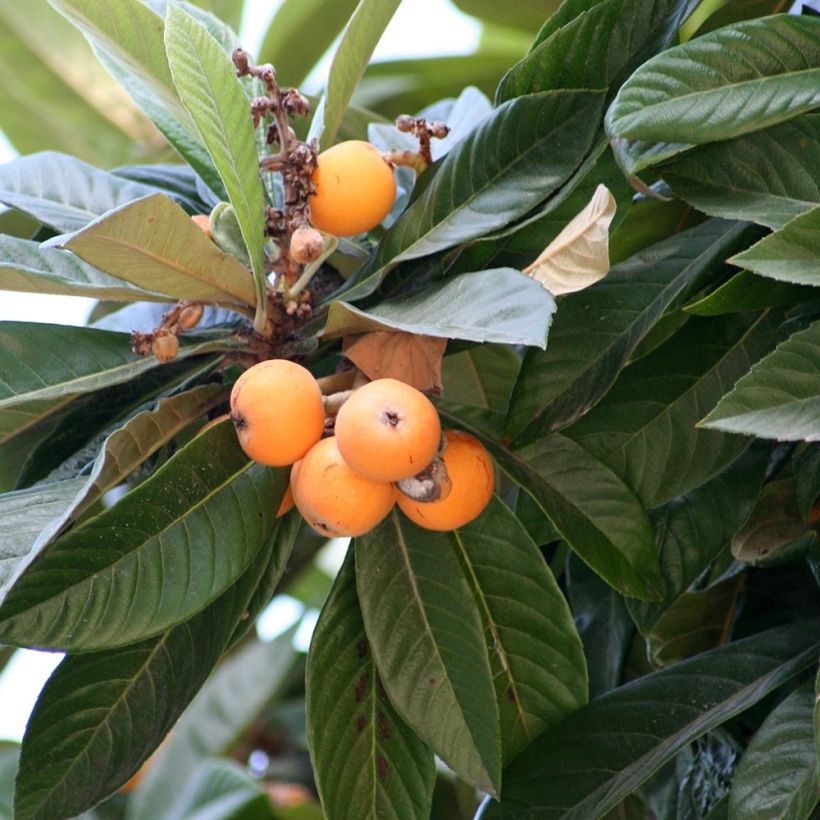

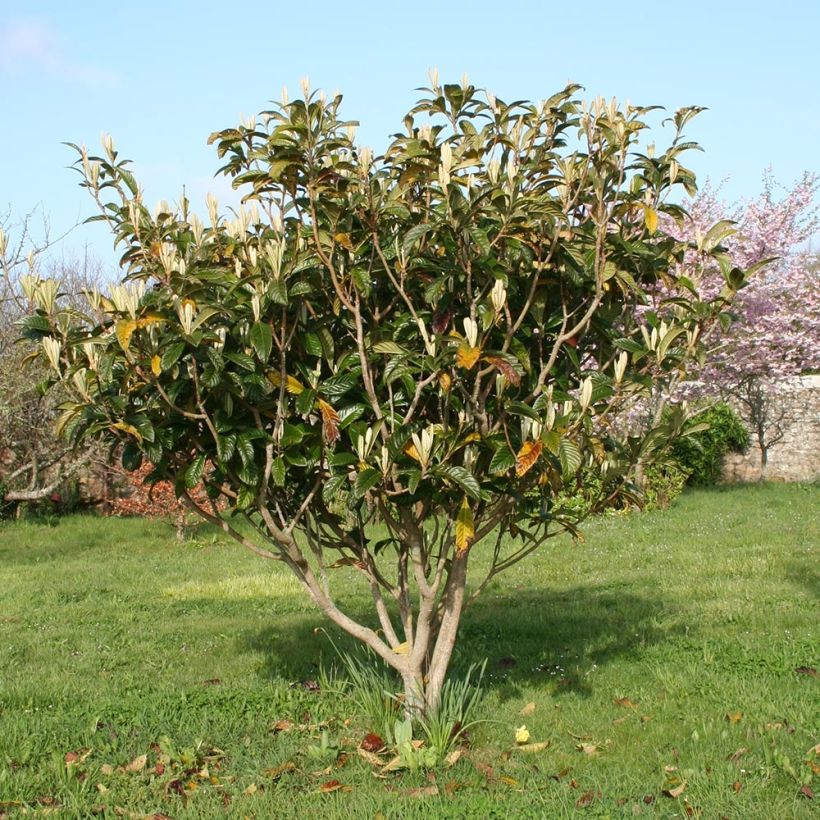

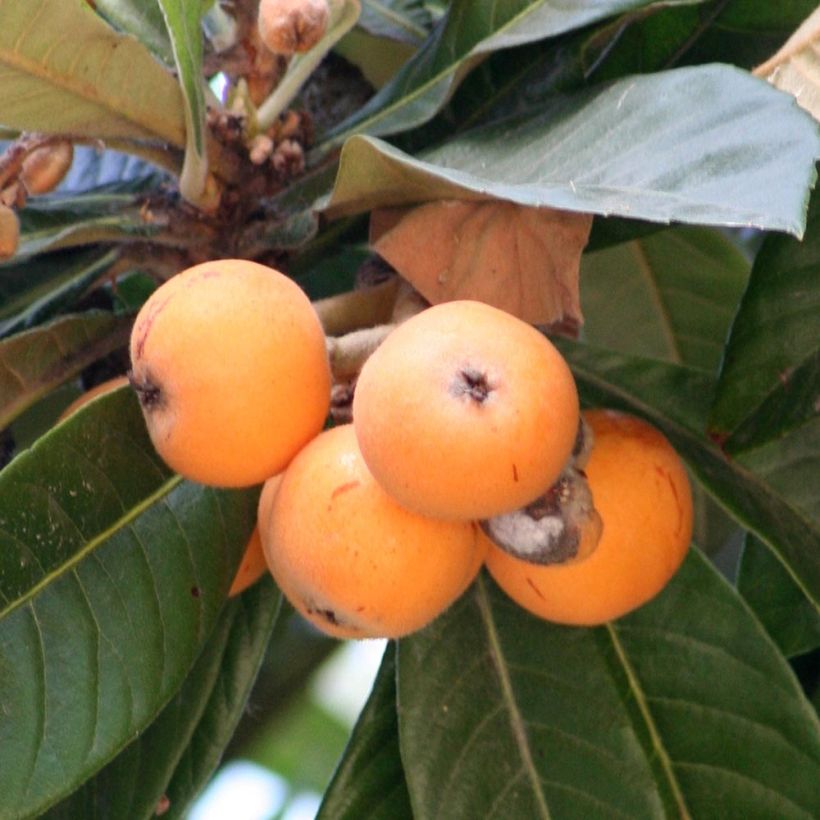

Plant habit
Flowering
Foliage
Botanical data
Eriobotrya
x japonica
Rosaceae
Japanese Loquat
China
Other Shrubs A to Z
Planting and care
Easy to grow and tolerant of summer drought once well rooted, the Japanese loquat thrives in full sun or partial shade, in deep, loose, even limestone soil. It only dislikes excessively compact or shallow and rocky soils. Planting is preferably done in autumn in warm and dry climates, to promote root growth, or in spring in borderline hardiness zones. Hardy down to -10/-12°C (14/10.4 °F) once well established, it may be useful to protect young bushes with a thick winter cover in case of severe frost. A spring application of well-rotted compost will benefit it, improving its growth and making its foliage more brilliant. This plant, belonging to the Rosaceae family, can be prone to bacterial fire blight (prune out affected branches) and powdery mildew, as well as attacks from the fungus responsible for leaf spot disease.
After planting, it is important to water regularly to help establishment, and during the first two summers. If you need to prune it, do so in late winter or early spring, or after fruit harvest. It is advisable to aerate the crown by removing branches and twigs directed towards the centre of the plant. Generally grown as a bush, it can also be trained as a single trunk.
Planting period
Intended location
Care
-
, onOrder confirmed
Reply from on Promesse de fleurs
Evergreen shrubs
Haven't found what you were looking for?
Hardiness is the lowest winter temperature a plant can endure without suffering serious damage or even dying. However, hardiness is affected by location (a sheltered area, such as a patio), protection (winter cover) and soil type (hardiness is improved by well-drained soil).

Photo Sharing Terms & Conditions
In order to encourage gardeners to interact and share their experiences, Promesse de fleurs offers various media enabling content to be uploaded onto its Site - in particular via the ‘Photo sharing’ module.
The User agrees to refrain from:
- Posting any content that is illegal, prejudicial, insulting, racist, inciteful to hatred, revisionist, contrary to public decency, that infringes on privacy or on the privacy rights of third parties, in particular the publicity rights of persons and goods, intellectual property rights, or the right to privacy.
- Submitting content on behalf of a third party;
- Impersonate the identity of a third party and/or publish any personal information about a third party;
In general, the User undertakes to refrain from any unethical behaviour.
All Content (in particular text, comments, files, images, photos, videos, creative works, etc.), which may be subject to property or intellectual property rights, image or other private rights, shall remain the property of the User, subject to the limited rights granted by the terms of the licence granted by Promesse de fleurs as stated below. Users are at liberty to publish or not to publish such Content on the Site, notably via the ‘Photo Sharing’ facility, and accept that this Content shall be made public and freely accessible, notably on the Internet.
Users further acknowledge, undertake to have ,and guarantee that they hold all necessary rights and permissions to publish such material on the Site, in particular with regard to the legislation in force pertaining to any privacy, property, intellectual property, image, or contractual rights, or rights of any other nature. By publishing such Content on the Site, Users acknowledge accepting full liability as publishers of the Content within the meaning of the law, and grant Promesse de fleurs, free of charge, an inclusive, worldwide licence for the said Content for the entire duration of its publication, including all reproduction, representation, up/downloading, displaying, performing, transmission, and storage rights.
Users also grant permission for their name to be linked to the Content and accept that this link may not always be made available.
By engaging in posting material, Users consent to their Content becoming automatically accessible on the Internet, in particular on other sites and/or blogs and/or web pages of the Promesse de fleurs site, including in particular social pages and the Promesse de fleurs catalogue.
Users may secure the removal of entrusted content free of charge by issuing a simple request via our contact form.
The flowering period indicated on our website applies to countries and regions located in USDA zone 8 (France, the United Kingdom, Ireland, the Netherlands, etc.)
It will vary according to where you live:
- In zones 9 to 10 (Italy, Spain, Greece, etc.), flowering will occur about 2 to 4 weeks earlier.
- In zones 6 to 7 (Germany, Poland, Slovenia, and lower mountainous regions), flowering will be delayed by 2 to 3 weeks.
- In zone 5 (Central Europe, Scandinavia), blooming will be delayed by 3 to 5 weeks.
In temperate climates, pruning of spring-flowering shrubs (forsythia, spireas, etc.) should be done just after flowering.
Pruning of summer-flowering shrubs (Indian Lilac, Perovskia, etc.) can be done in winter or spring.
In cold regions as well as with frost-sensitive plants, avoid pruning too early when severe frosts may still occur.
The planting period indicated on our website applies to countries and regions located in USDA zone 8 (France, United Kingdom, Ireland, Netherlands).
It will vary according to where you live:
- In Mediterranean zones (Marseille, Madrid, Milan, etc.), autumn and winter are the best planting periods.
- In continental zones (Strasbourg, Munich, Vienna, etc.), delay planting by 2 to 3 weeks in spring and bring it forward by 2 to 4 weeks in autumn.
- In mountainous regions (the Alps, Pyrenees, Carpathians, etc.), it is best to plant in late spring (May-June) or late summer (August-September).
The harvesting period indicated on our website applies to countries and regions in USDA zone 8 (France, England, Ireland, the Netherlands).
In colder areas (Scandinavia, Poland, Austria...) fruit and vegetable harvests are likely to be delayed by 3-4 weeks.
In warmer areas (Italy, Spain, Greece, etc.), harvesting will probably take place earlier, depending on weather conditions.
The sowing periods indicated on our website apply to countries and regions within USDA Zone 8 (France, UK, Ireland, Netherlands).
In colder areas (Scandinavia, Poland, Austria...), delay any outdoor sowing by 3-4 weeks, or sow under glass.
In warmer climes (Italy, Spain, Greece, etc.), bring outdoor sowing forward by a few weeks.

































